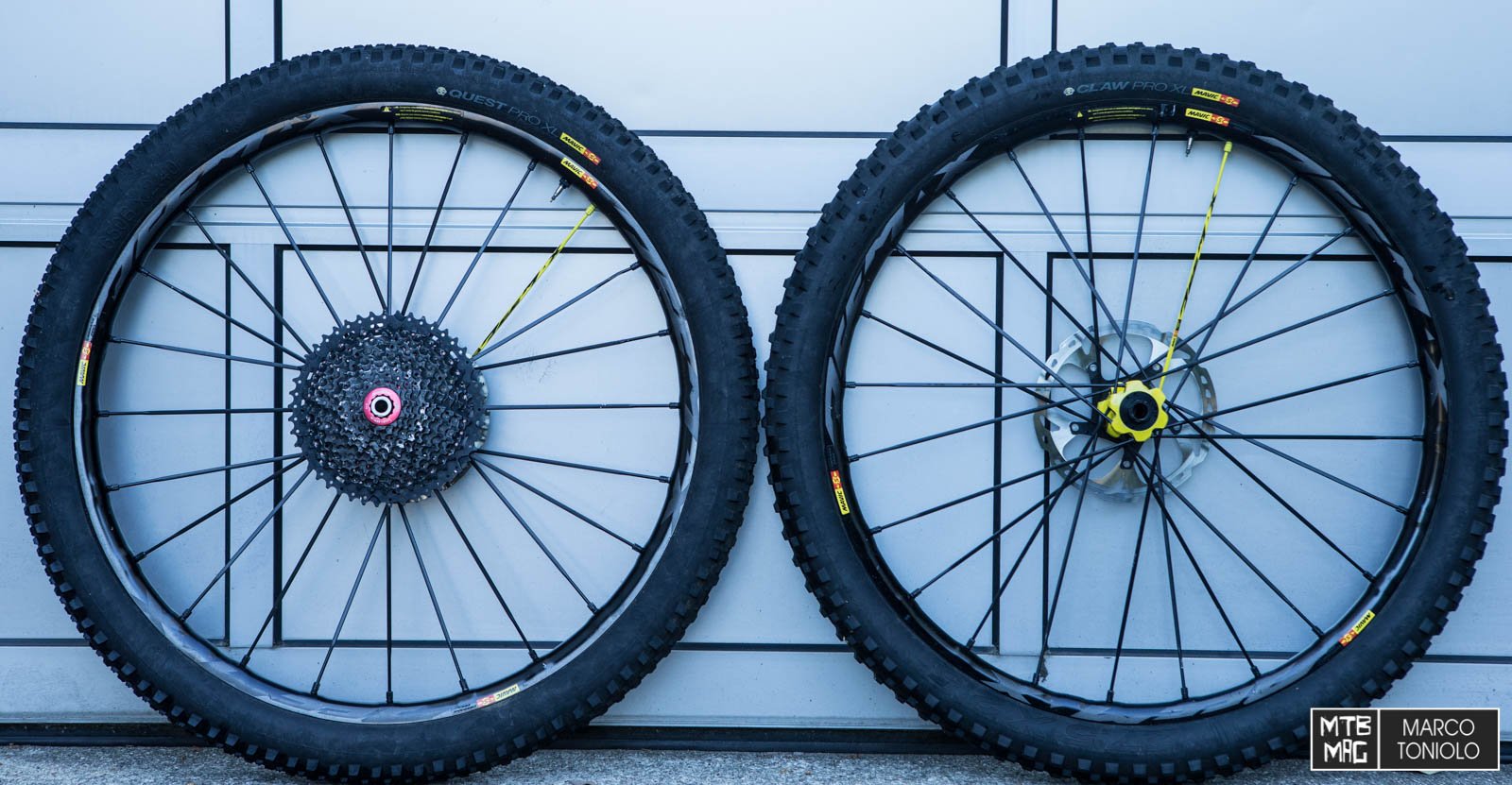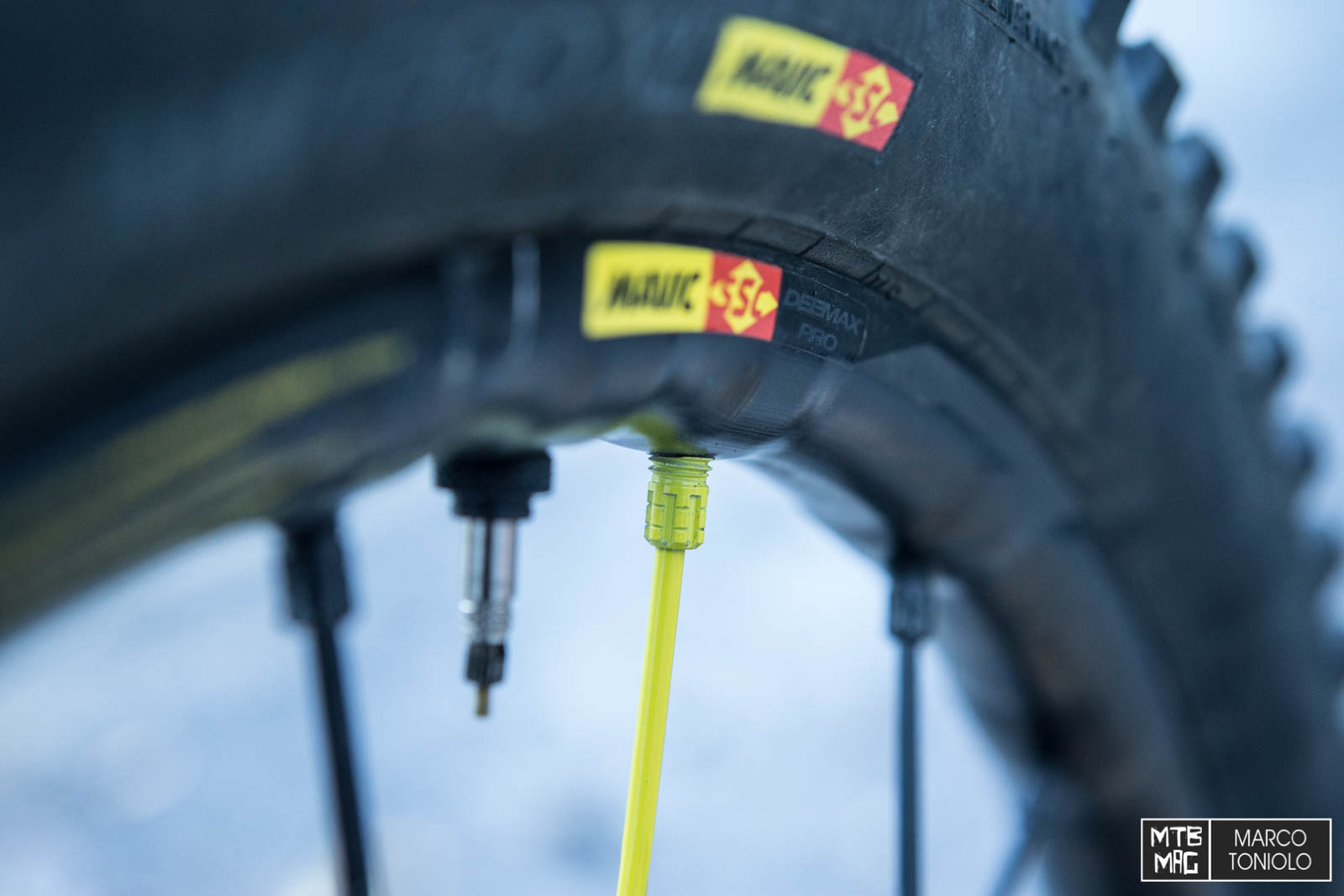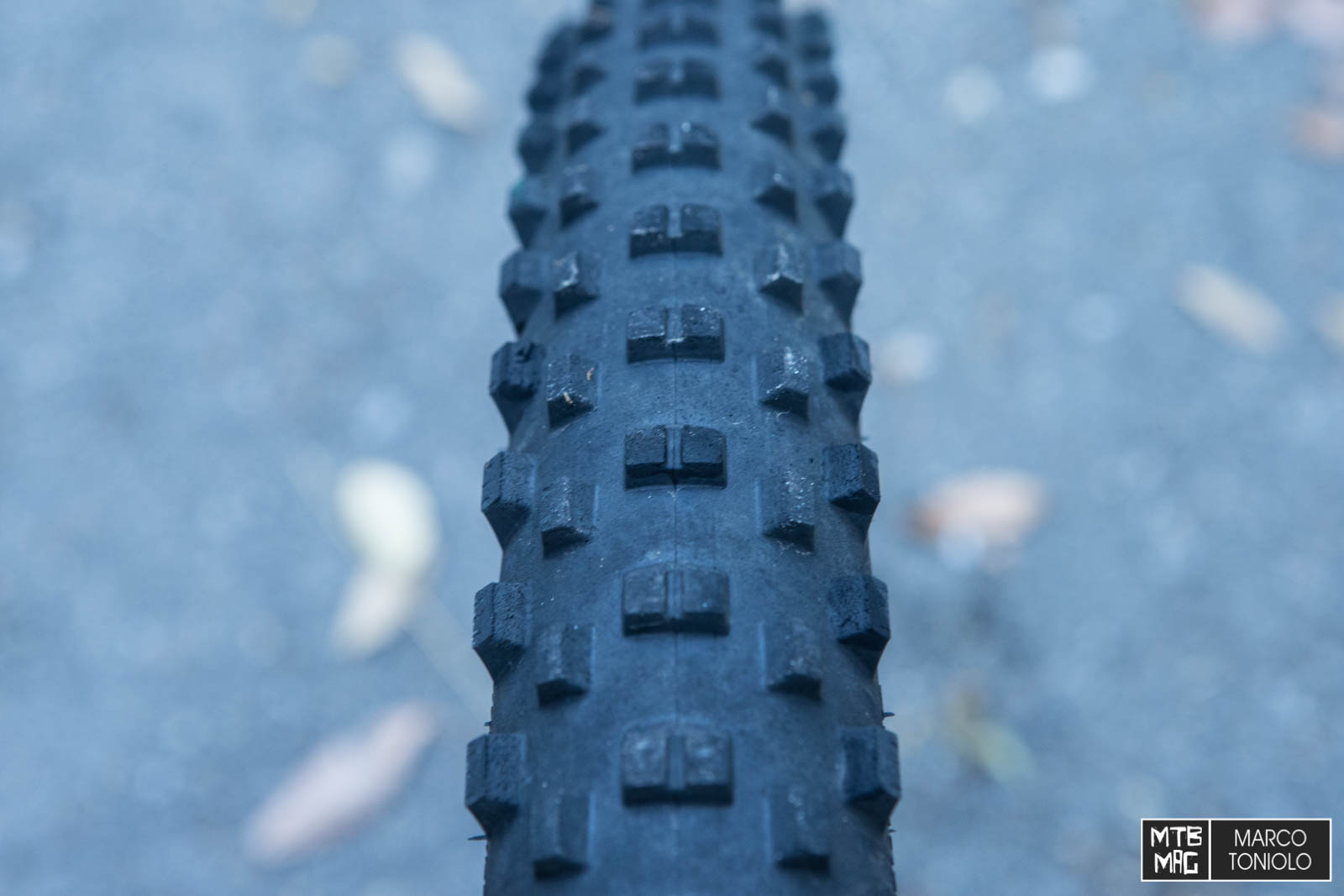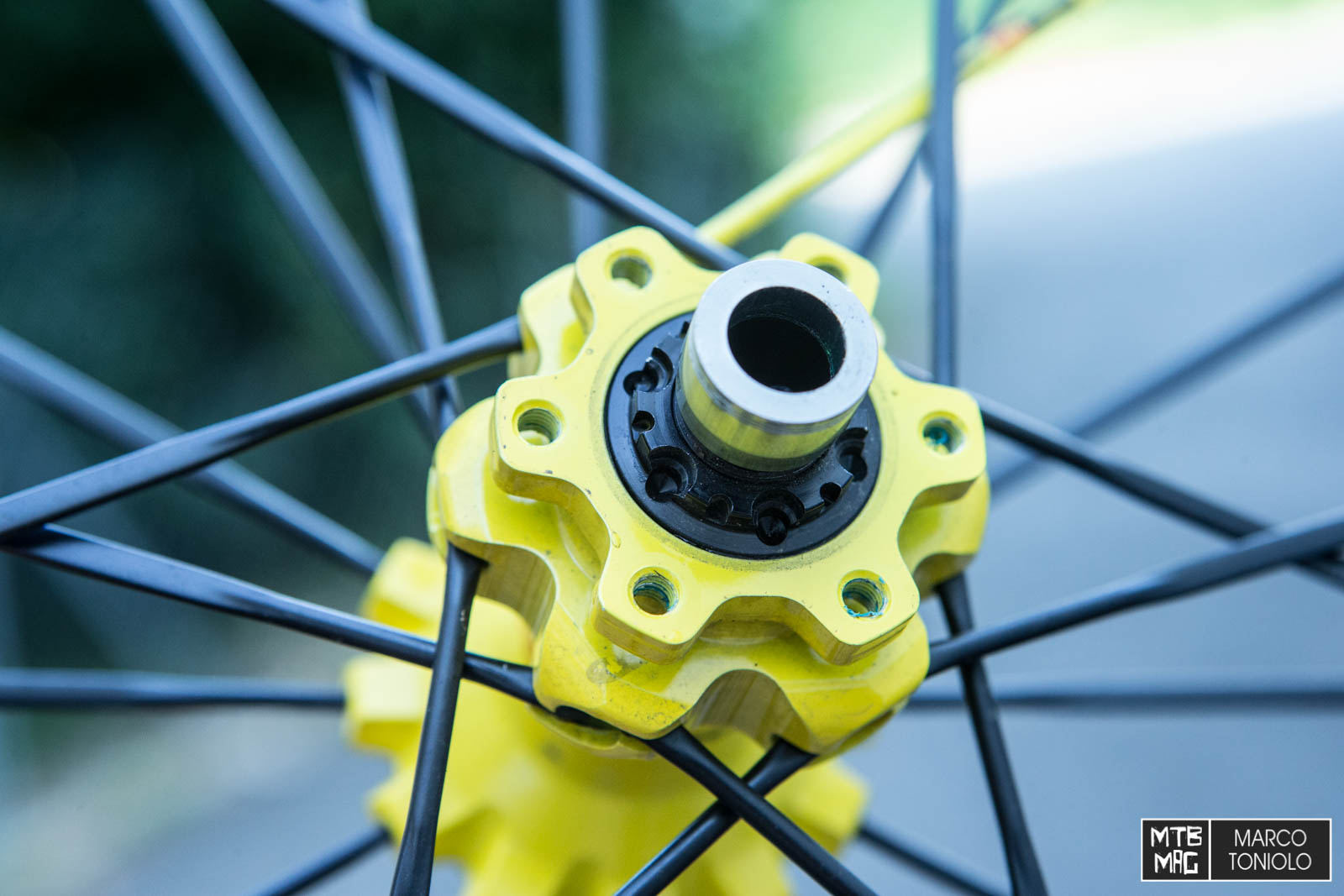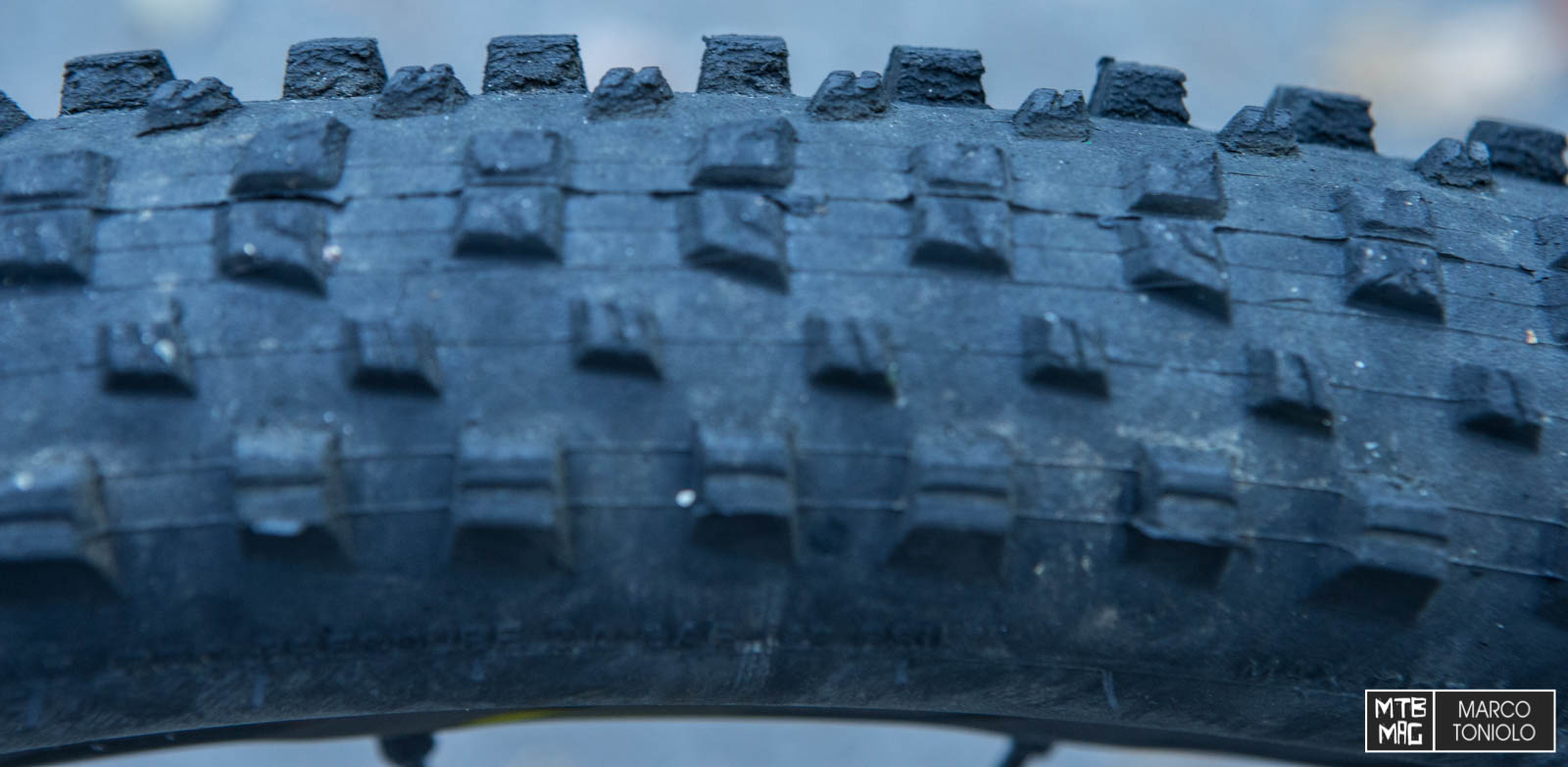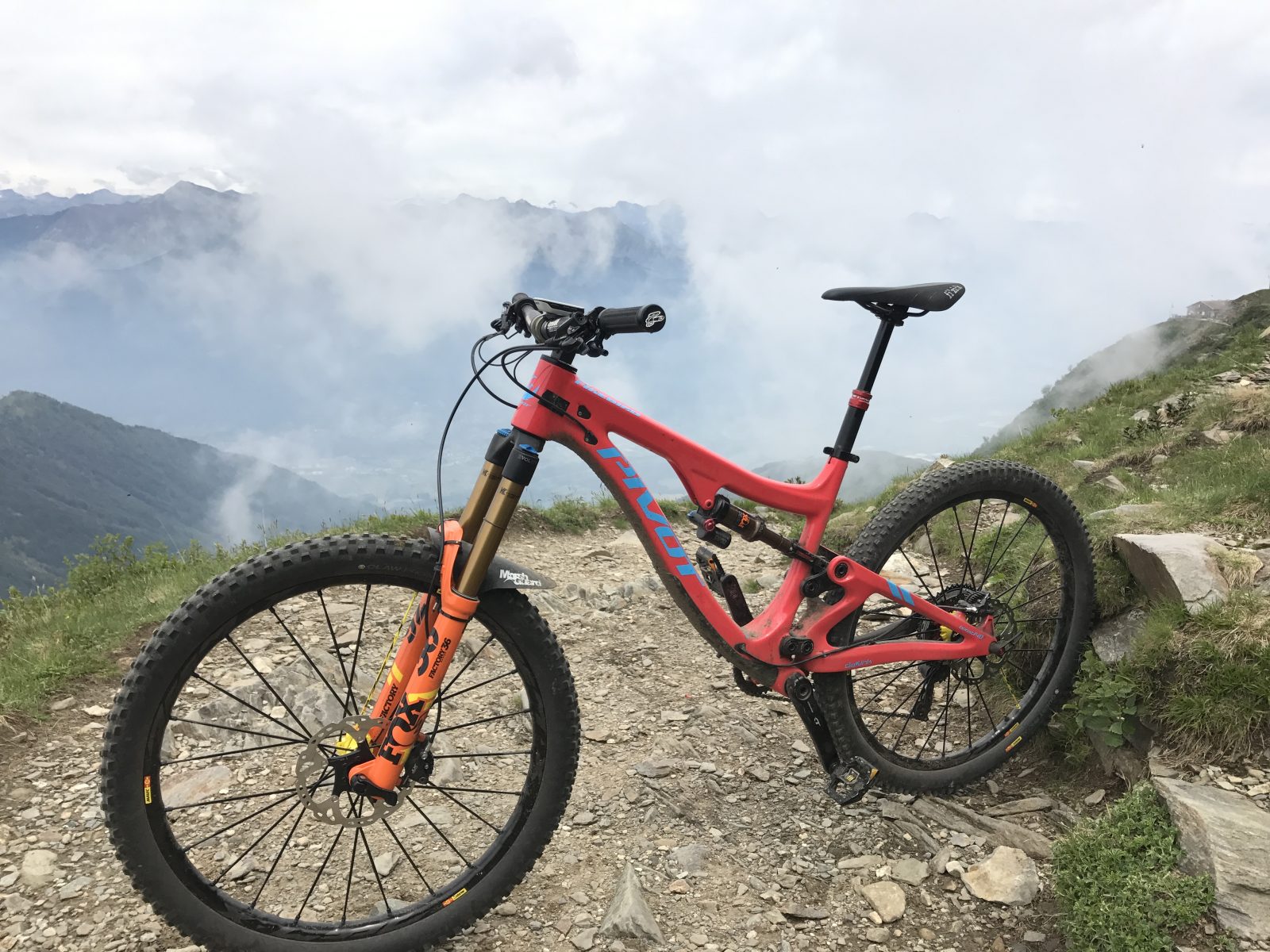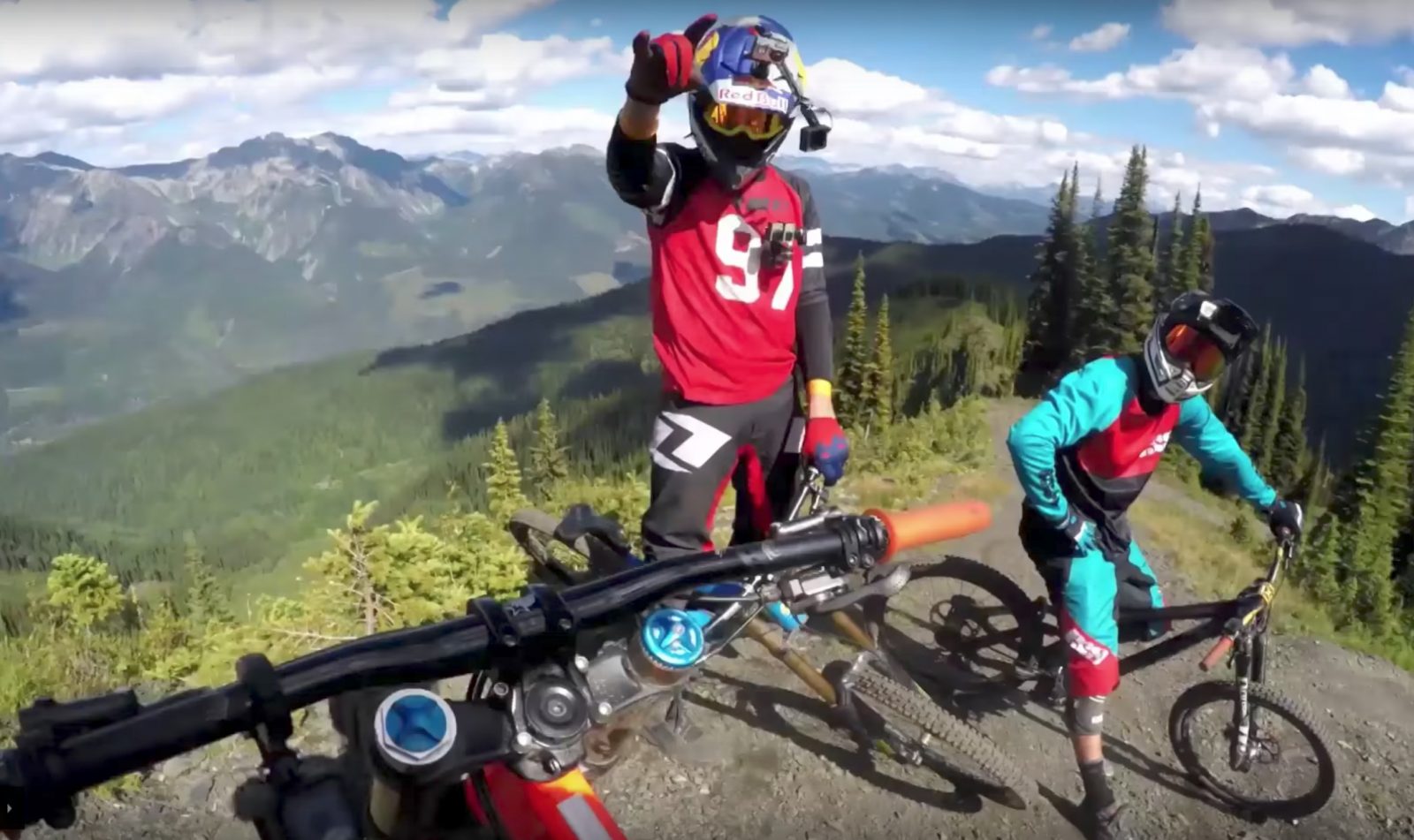For this test we tried out the Mavic all mountain/enduro tire/wheelset combination. These Deemax Pro were were shipped with Mavic tires pre-installed, with a Quest on the rear wheel and a Claw on the front one.
With the Deemax Pro, Mavic abandoned the concept of narrow rims and provides two rims with different inner widths: 28mm at the front and 25mm at the rear, respectively combined with 2.5” Mavic Claw Pro XL and 2.4” Mavic Quest Pro XL tires.
Technical specifications
Spokes: 24, Zicral, straightpull, bladed
Lacing: front crossed 2, rear Isopulse (drive side lacing radial system)
Rims: aluminum UST hookless, no tape needed for tubeless mounting.
Rims inner width: front 28mm, rear 25mm
Hubs: Boost, rear 12x148mm, front 15x110mm
Front tire: Claw Pro XL, 2.5”. Measured weight: exactly 1000 grams
Rear tire: Quest Pro XL, 2.5”. Measured weight: 910 grams
Front wheel, measured weight valve included: 830gr.
Rear wheel, measured weight with boost adaptors, valve and Shimano freehub installed: 910gr.
Available format: 27.5”
List Price: 1,000 Euro, tires included.
CRC at 900 Euro.
Out of the Box
A year ago it was still impossible to find Mavic rims with an inner channel wider than 23mm, now the French brand, in line with the market trend, offers a UST front rim up to 28mm wide. The Mavic specific build does not require any taping for tubeless mounting, so the process of pumping up a tire is simple and, thanks to the shape of the rim itself, it can be carried out with a floor pump. As you can see in the picture, the profile is hookless and thus more resistant to impacts with rocks. Those impacts are more likely to happen, since a wider rim allows you to set lower pressure values without the risk of burping the tire.
The rear rim inner channel is 25mm wide. This is mainly to reduce the weight, but also because the rear tire is slightly narrower than the front one. To save as much material as possible, the rims have an “irregular” shape, but they’re reinforced near the nipples. The other parts of the wheels are built in classic Mavic style, with straightpull Zicral spokes and specific nipples, oversized hubs with adjustable sealed cartridge bearings (more details below).
Mavic developed the tires specifically for these wider rims, because they think the other available tires have not been built for such rim sizes. They are large, especially the Claw at the front, and rather round in profile. Actually, one of the main problems of tires installed on wide rims is that they become too squared and lose grip, especially while cornering.
Claw:
Quest:
The tread of the Claw is way more aggressive than that of the Quest, which is meant to provide low rolling resistance. The Claw has a double compound, softer on the sides and harder in the middle, while the Quest has a single compound.
[ad12]
On trail
I installed the Deemax Pro on our long term test bike, the Pivot Firebird. The pressure was usually set at 1.7 bar at the front and 1.9 at the rear. I rode mainly rocky and harsh trails, without ever having a flat tire during the testing period.
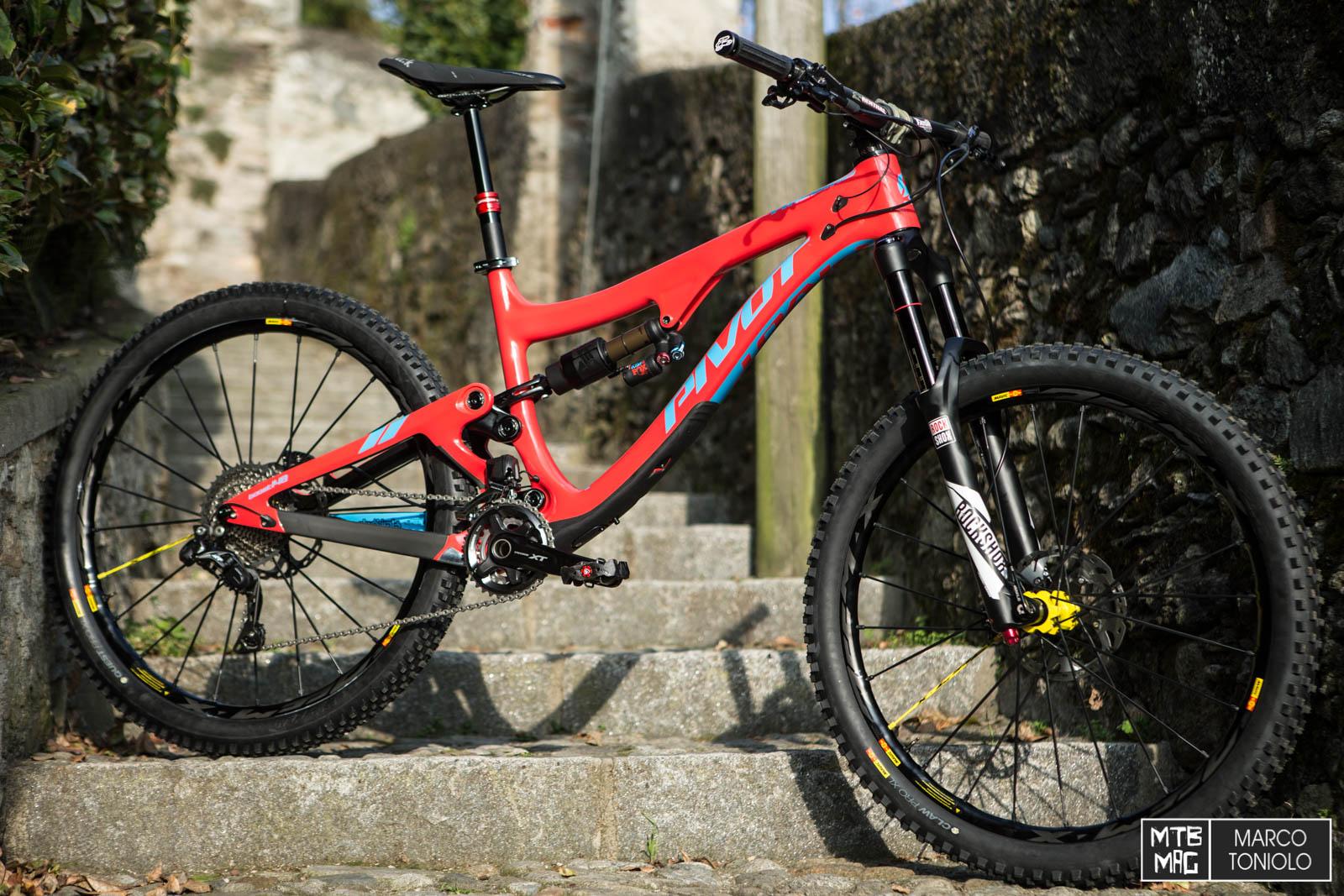
First of all I have to say the all black look with some yellow spots is very well thought out, it matches almost every bike. The rim shape looks very nice, rounded near the spokes. The front tire is massive, similar to 2.6” “not quite plus” tires. No doubts about the sturdiness of the tires, considering that the front one weighs exactly 1kg, and the rear one is just slightly lighter. It’s the price to pay if you are looking for reliable tires and, considering the segment, the weight is totally in line with the competitors.
The tires were shipped already installed onto the rims, perfectly matching the Mavic logo on the rims.
During the whole test, both wheels and tires worked perfectly, the only adjustment I had to make was to tighten the hub bearings after a couple of very hard rides. It is a common issue with Mavic hubs, in fact a plastic key is provided to tighten the bearings. It can be also be done with the wheel installed on the bike, simply tightening the head of the hub with the key. In order not to lock up the bearings it is important not to overtighten…
Regarding the rear hub, it works quickly and instantly, and is perfect for alpine trails, where on tight turns a quick engagement can help prevent you from putting your feet on the ground. It is very smooth and efficient also because the dirt is kept out of the inner mechanism.
The rims are really solid: despite several hits against rocks, they are not damaged and still perfectly true. As already mentioned, the tires passed the puncture/cut test with merit. The Claw provides a optimal grip on every surface, even in wet conditions, and instills rider confidence. The Quest is not quite at the same level, in particular due to the side tread which is too small, protrudes and wears out fast:
As you can see in the picture, the knobs have worn out, because of their external position and their small basis. In this way, they tend to bend when cornering. This is a minor problem since we’re talking about the rear wheel, but it would be better if the knobs were a bit shorter and wider.
The wheels are quite stiff, but not as stiff as some carbon models. The front end, in combination with the massive tire, feels comfortable since it soaks up vibrations very well, and allows for some mistakes, like ending up on harsh ground outside the best line. You almost feel like riding a plush machine which is still as precise as an enduro bike requires. The French brand really hit their target: they provide a rim/tire combination with good tire sidewall support, allowing you to ride with low pressures. Due to the narrow rims, this was not possible with Mavic before, and it is not an easy job to find the right match between rims and tires of different brands. From this point of view, the Mavic rim/tire system is one of its kind and worth buying, since it offers a high performance, out-of-the-box solution.
Conclusions
Mavic’s choice to enter the wide rim market was a good call. They offer an optimal rim/tire match, specifically calibrated for the front and the rear wheel. The wheels are solid and reliable, although you need to tighten the rear hub once in a while, because it tends to get loose. The front tire is a real weapon, which provides excellent grip also thanks to the low pressure values you can set. The rear tire wears out rather fast and the side knobs are quite weak. All in all it is a well thought out product which is perfect for the enduro/all mountain segment.

